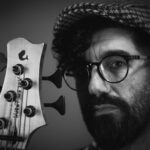Introduction: Technological Enchantment and Deep Concern
Artificial intelligence (AI) based music production applications evoke both an awe-inspiring fascination and a profound concern about the future of music. Now, with just a single-sentence prompt or a brief description of a melody, it has become probable to produce a style-appropriate composition within minutes.
To leave no room for doubt in the reader’s mind, it is worth summarizing, in non-technical terms, how the relationship between music and computers has evolved over time.
From Analog to Digital: The Changing Face of Music
First, between 1983 and 1987, the foundation for digital music production tools was laid with the introduction of the MIDI (Musical Instrument Digital Interface) protocol and DAWs (Digital Audio Workstations, such as Cubase, Logic Pro, and Pro Tools). By the late 1980s, computers began to be used as active audio editing tools in studios. After 1991, digital systems became the professional studio standard. During this transition, analog systems, particularly magnetic tape recording technology, which had been the industry standard since the 1950s—did not disappear overnight; rather, they gradually receded into the background alongside the development of digital systems. By the year 2000, DAWs had become the industry standard, and today we use the most advanced versions of these systems in both professional and personal home studios.
To my point of view, analog sound recording systems have lost neither their value nor their uniqueness, as they carry a true imprint of physical vibrations (waves). Digital recording systems, on the other hand, convert these vibrations into sequences of numbers, introducing an abstract layer in between. For this reason, analog recordings often feel warmer, more textured, and more ‘authentic.
It’s no surprise that debates over “which is better, analog or digital?” continue today, as this issue is not only technical but also tied to personal tastes, habits, and rituals.
If we are to talk about an honest, manipulation-free method, it is when the musician directly relies on their own skills to play their instrument and sing their song, most often in what is called “live recording,” where musicians come together simultaneously and the recordings remain untouched afterward. Unfortunately, such recordings have fallen into oblivion with the end of the analog era.
At this advanced stage of technology today, people rightly ask the question: “Why should we prefer the primitive and laborious methods of the analog era? Isn’t that just an unnecessary waste of time?” My personal view is that this is not really a matter open to debate; it is entirely a matter of personal preference. However, when we listen to recordings from the period spanning the 1950s to the 1980s, the sincerity, naturalness, and that unique “mojo” that strike us immediately are reflections of those honest and straightforward recording approaches.
Based on my own experiences, I can confidently say that the more heartfelt, soulful, and sincere the melodies are played and sung, the more the technology used preserves that sincerity until it reaches the listener.
The Age of Manipulation: From Auto-Tune to Artificial Composers
Another turning point came in 1997 with the release of the Auto-Tune software. Initially designed merely to correct minor pitch errors, this program gradually transformed into a “popstar machine” that made poor singers and untalented individuals sound like stars. Today, advanced versions like “Melodyne” can even give a voice an entirely “different personality.” For some, it’s just a fun tool; for others, it’s the music industry’s first manipulation device that deceives audiences, prevents genuinely skilled singers from standing out on the art scene, and misleads the masses. The robotic vocal effects widely used mostly in R&B and Rap music demonstrate how Auto-Tune has shifted from an aesthetic choice to an industrial strategy.
DAWs, MIDI-based instruments, and effect software are functional only when guided by human ideas and direction. They cannot compose a piece or create a recording on their own; however, these systems can be consciously directed by a sound engineer, an arranger, or a musician trained in the system.
However, these balances have been fundamentally shaken by the direct involvement of artificial intelligence in the music industry. Although the roots of AI-based music production date back to 1951, systems capable of creating original compositions without human intervention only emerged in the early 2010s. For example, Iamus appeared in 2012, followed by AIVA in 2016. After 2023, systems like SUNO have emerged as fully multimodal AIs capable of both receiving text-based commands and producing vocal, arranged pieces. These applications are not merely assistive tools; they have transformed into software that behaves as autonomous “composers” and “performers.” This is not just a technological shift—it is also a cultural exploitation, an ethical erosion, and one of the most serious blows to the history of labor.
I want to emphasize again here: The purpose of this article is not to portray artificial intelligence as a monster. On the contrary, I believe that when used correctly, it can contribute to many human-specific creative projects and serve as a tool to explore combinations beyond the reach of the human mind. Unfortunately, however, the era we live in is far from these optimistic scenarios. The productive power of artificial intelligence is largely built on the imitation and exploitation of human labor.
The styles, melodic textures, harmonic habits, and emotional tones of past works are being analyzed and reprocessed without permission by these AI systems, then presented as if they were entirely new creations. This is not merely an aesthetic distortion; it is clearly a theft of labor. Cultural memory, individual stories, and creative efforts are being robbed. Music is not just a sequence of notes; the history, personal struggles, socio-political context, and emotional weight carried by those notes form the essence of music. These cannot be imitated. When they are, what emerges is not music but merely an empty echo.
Formun Üstü
Digital Platforms, Artificial Intelligence, and the Devaluation of Art
It is no longer a secret that major digital service providers like YouTube and Spotify release AI-generated music under fake artist names and album covers, amassing millions of streams while channeling all royalty revenues directly into their own coffers. These platforms, which launch their own artificial artists to avoid paying even the smallest amount owed to real musicians, are engaging in unethical labor theft and imposing an exploitative model that pushes artistic workers out of the system. This situation is no longer just a “technology” issue; it is outright an exploitative system.
And this is precisely why the system fears the artist’s originality and dissenting stance. Because being a creative artist is equivalent to a mortal human discovering the elixir of immortality on this planet.
Digital streaming,the method of delivering music to listeners over the internet,was initially introduced as a revolutionary system to replace the “clunky and unfair” traditional music market, aiming to protect artists’ rights and curb piracy. In the past, artists signed contracts with record labels, and albums were distributed in physical formats. Although piracy and rights violations existed, the artist’s share was significantly higher compared to today.
Today, Spotify,the leading player in the music industry,aims not to increase artists’ earnings but to maximize its own profits. In this system, where royalties are distributed unfairly and algorithms promote certain genres to steer listeners, creative pluralism and cultural diversity are severely undermined. As a result, this new order devalues artists’ works both aesthetically and economically.Formun Altı
For example, the track “Heart on My Sleeve,” created by artificially replicating the voices of Drake and The Weeknd using AI, was removed by Universal Music Group due to copyright infringement. It has come to light that major platforms like Spotify have directly added unauthorized AI-generated songs of deceased artists or entirely fake artist profiles to their libraries. For instance, AI-generated works released under the nonexistent name “Chillhop Essentials” have garnered millions of stream.
These abuses are not limited to the Western music industry; they have also started to appear in Turkish and Kurdish music. On YouTube channels like “Zozan” and “DengBot Kollektif,” AI-generated clips and entirely AI-produced songs based on the works of Kurdish poets such as Cegerxwîn are being published. Under the label “Turkish Anatolian Pop-Folk,” clear instances of direct quotes and outright theft from famous 1970s artists such as Barış Manço, Erkin Koray, and Cem Karaca can be seen. Additionally, the “AnatolianPsychRockLab” channel is rapidly growing through AI works themed around Alevi and Sufi music, engaging in artistic theft.
The danger we face today runs far deeper and more existential than musicians simply fearing the loss of their profession. AI generators can, without any human involvement, invent a fictional artist or band name in just 20 minutes, produce a complete music album with composition, arrangement, and vocals, and have that album reach millions on digital platforms.
This situation has two fundamental consequences:
- The systematic exploitation of the rights of artists, composers, and music producers.
- The promotion of AI music, dictating to society that traditional music production is “unnecessary,eventually leading to the elimination of human-made music and the destruction of music’s soul.
Resistance and the Future: Rehumanizing Music
This issue is directly connected to humanity’s historical relationship with art. The images the first humans painted on cave walls, the rhythms of the earliest percussion instruments, the first lament songs… These are not just forms of expression but existential cries. Art is humanity’s first bargain with immortality—a way to cope with loss, find meaning, and situate oneself within the context of something beyond the self.
In this context, music is not only entertainment, content, or background sound. Music is an identity, a memory, a call. No artificial intelligence can replicate the depth of this call or the uniqueness of the fingerprint that carries this voice. Music created by a human with their own voice, breath, and hands holds not only aesthetic but also ethical and ontological value. Because that music has been lived.
So, what can we do at this point?
The first step is awareness. Even choosing not to embrace AI-assisted music production applications is a form of resistance. A true musician should not give credit to the fake surfaces created by artificial productions but should remind listeners of what is authentic.
Secondly, it is necessary to expose and, if possible, report AI-generated artist content on platforms like Spotify and YouTube, and raise public awareness about this issue. Social media doesn’t just create trends; it can be used to spread awareness. Social consciousness becomes possible when individual resistance transforms into a collective voice.
And perhaps most importantly: Every individual is born with a fingerprint that belongs solely to them. Staying true to this uniqueness,searching for, finding, and expressing our own voice ,that is true creation. Not imitating, not surrendering to what is readily offered, but pursuing originality is a form of resistance today.
The future of art will be shaped not only by technology but by human hands. We must rehumanize music. Because music is not just something heard; it is something felt, lived, and shared.
Links to the references mentioned in the article:
Chillhop Essentials – Spotify :
https://open.spotify.com/intl-tr/album/3jW9AeZ8RuelsiSvO2cNPU
Ghostwriter977 – “Heart on My Sleeve” :
https://www.youtube.com/watch?v=S2qxvg9NNPM
https://soundcloud.com/matteo-bevilacqua-623847207/drake-ai-heart-on-my-sleeve-ft
zozan :
https://www.youtube.com/@zozan_c
DengBotKolektif :
https://www.youtube.com/@DengBotKolektif/videos
AnatolianPsychRockLab” :
https://www.youtube.com/@AnatolianPsychRockLab/videos






